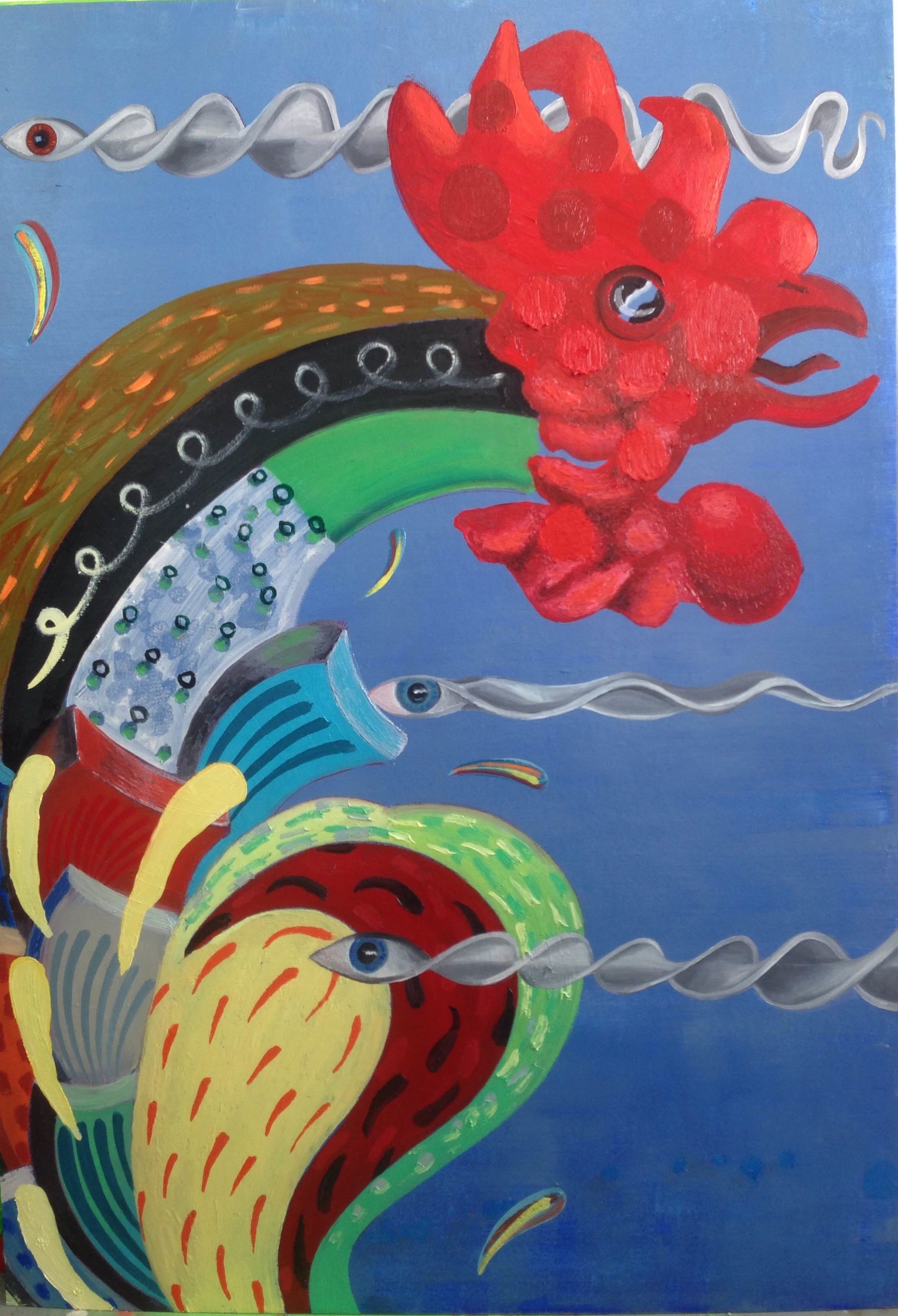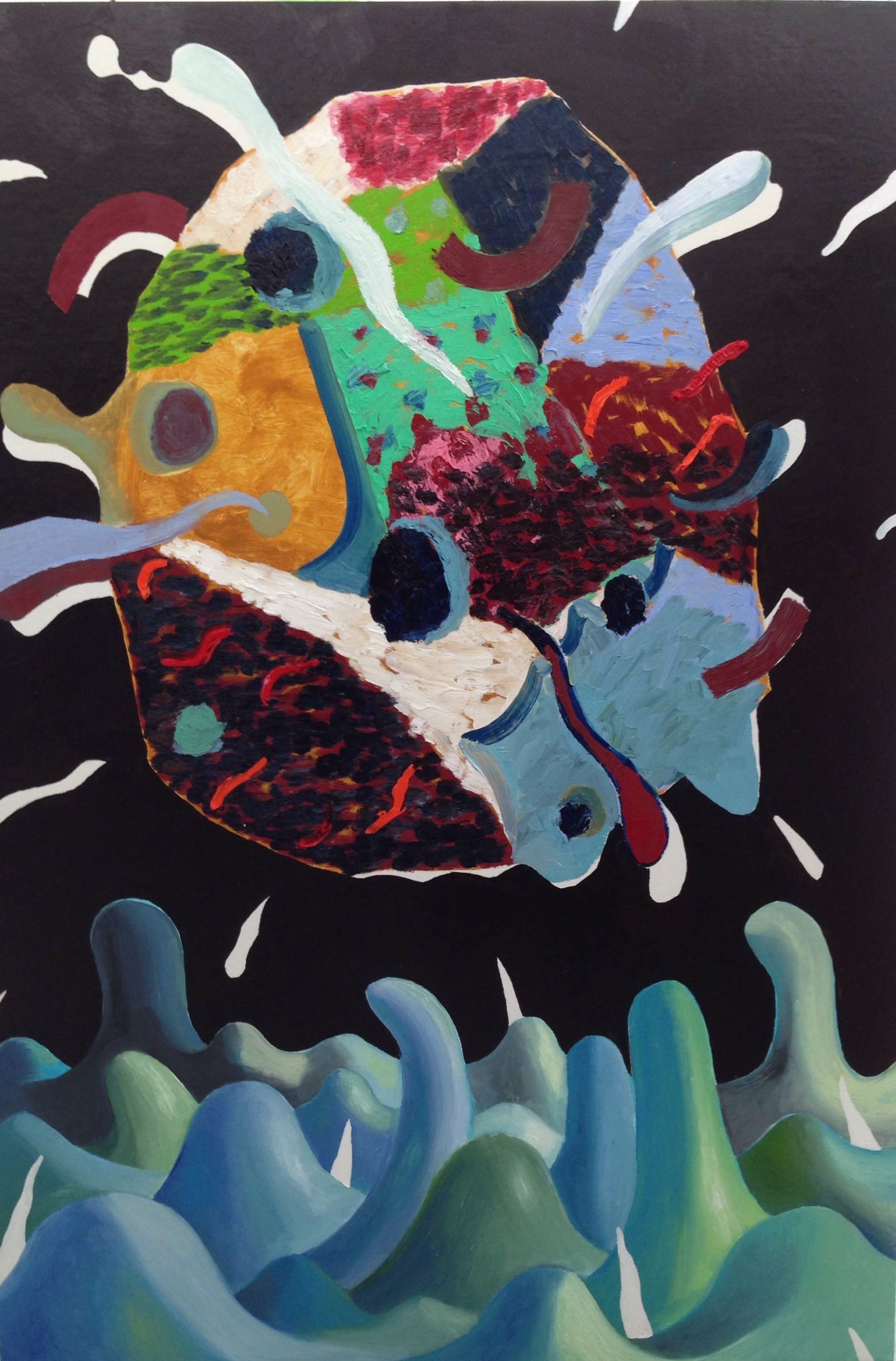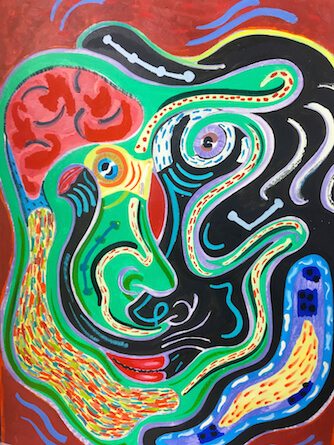 When, and how, did you begin life as an artist?
When, and how, did you begin life as an artist?
I realized quite early on, in school, that it was a possibility for people to experience and represent the world in a variety of ways, which left a powerful impression on me. It may sound corny but I’ve always had a very purist and positive idea of what the ‘act of making’ is, and what it can do. Later on, in art college, developing ideas and turning them into ‘things’ felt like quite a magically charged and timeless process somehow.
I think ‘life as an artist’ began as soon as I left art school around the age of twenty. It wasn’t overtly obvious to start with; the interests were there, bubbling away, but the results weren’t. So ‘being an artist’ wasn’t full-time by any means initially. Even working in other jobs, whenever I had free time, I would make my own work whether it was in my bedroom (not recommended mind, White Spirit stings the nostrils) or in a studio. I always found looking at art, and later making art, a necessity in order to understand the world and my place within it. This is something I never really felt any other path could offer in the same personal, yet communicative way. I think even just down to the basic notion that when someone else recognizes an innate passion in what you do and gages their own interest in how you see things, all of that time and energy spent in bringing ideas into existence really pays off.

Can you tell me a little about the work that will be showing in Channel Synthesis?
I’m exhibiting twenty-seven paintings at floor level, displayed flat beneath a clear acrylic and wood platform onto which the gallery visitor can tread. Walking over these works, the visitor is invited to experience an unconventional mode of viewing that relocates the paintings from the walls of the gallery and places them underfoot to subvert the established hierarchies of conventionally viewing painting.
Interspersed throughout the floor, serpentine-like sculptures extend the installation into the physical space of the gallery, connecting the flat level of the paintings with the volumetric realm inhabited by the viewer’s body. These stylised ‘serpents’, which also appear throughout the paintings, symbolise the vital channel and flow between external stimulation and creative introspection. For this exhibition I’m very interested in ideas of subconscious perception and subjective reality and how these two states can be drawn out into our physical space, to be presented before us in some way.
Can you explain more about your decision to display the works at floor level?
Well, I think that in the paintings referential elements become contorted and amalgamated into the flow of subconscious signifiers via my individual interpretation. The works reflect on how the internal and external worlds fuse together into an alternative reflection of things through the interpretive channel of human consciousness. So the floor installation of paintings means that by being able to step into the frame of the image, however romantic that may sound, the viewer can physically inhabit the painting in a parallel of this psychological process. I hope that by summoning the trope of the dance-floor, the entire installation functions as an interactive canvas that shapes how the body navigates each painting and the space as a whole.

How does the Max Ernst quote (the synthesis of objective and subjective life) impact your practice?
Channel Synthesis calls up earlier explorations of these concerns, including the experimental installations at Peggy Guggenheim’s first New York space The Art of This Century gallery in the 1940s, and artist Max Ernst’s thinking when he elucidated in a 1961 interview for BBC television show Monitor. Seeing usually means that you open your eyes to the outside world. It is possible to see another way; you close your eyes and you look into your ‘inner world’. If you can make a synthesis of these two important worlds you come to result in what can be considered as the synthesis of objective and subjective life.
I think that, especially with this particular installation at Evelyn Yard, I’m interested in looking at how the human psyche occupies the strange position, recognised by Ernst, perpetually caught between external representation and introspective process. My interests when making work seem to have usually operated around this area whilst also containing awareness in the fact that artists are in a privileged position where they are able to directly set-up and expose these situations. In this case, via the traditional medium of painting and sculpture, combined with their installation in perhaps a more unusual way, I want to consider how the production of artwork relies on this dualism and requires an open channel between the exterior world and internal perspective.

Your work has been described as ‘transcendental’ before. Would you agree with this? And do you have a specific state of consciousness in mind when you create a work, or is it very much just a provocation for a change in consciousness?
Wow that’s good – I’ve never heard my work be described as that! Looking at art and being in a position where I can make art, weirdly helps me gain a tad more clarity on how I look at the world, and how my own representation of that world operates when others come into contact with it. I think that, if the linguistic and social tools we use form us as individuals, then art has the ability to either magnify our awareness of those constructs and within that offer up a position, or it has the ability to challenge them in whatever subtle, direct, obscure or literal way it sees fit.
It’s a kind of paradox. Generally speaking, art can take you very much out of the moment, while simultaneously intensely keeping you inside it, even showing you ‘the moment’ itself. By just ‘being’ I think art has the ability to help gage a sense of ‘what the case is’ even if inadvertently. In this sense, I believe that all art becomes a transcendental experience however specific its focus. I’m very ‘in the moment’ when I’m making individual pieces which is interjected with taking into account what we’ve previously talked about as a whole; the act of representing a flow between external stimulation and creative introspection. But I don’t think my work tries to be a quotation of that or a literal analogy of that, I think it’s just being that because it slots into the remit of existing to be looked at, and hopefully engaged with.
‘Channel Synthesis’ is showing at Evelyn Yard until 9 July





